Registered with the Registrar of Newspapers for India under R.N.I 53640/91
Vol. XXX No. 21, March 1-15, 2021
Our seaside scrub
by A. Rajaram
By forcing us to confine ourselves to the safety of our homes, the Covid pandemic has opened our eyes to the bounty of nature that abounds around us. To their joy and surprise, people are beginning to notice a variety of birds in their own backyards, beauties hitherto unnoticed. As for myself, I have started taking daily walks to the seaside to get away from home and enjoy the cool morning breeze. The seaside is hardly 500m away and my walks cover a stretch of land around 50-100m wide, adjacent to the high-tide line. Lately, I have begun to appreciate the richness of nature that can be seen even on my short strolls.
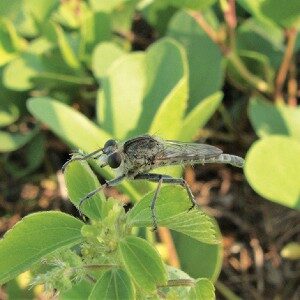
A robberfly.
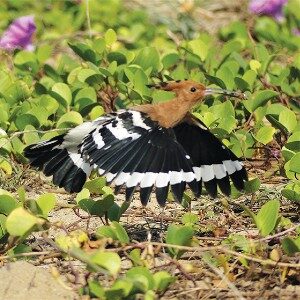
Hoopoe with insect.
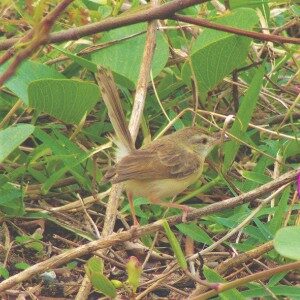
Plain Prinia and Beach Bean.
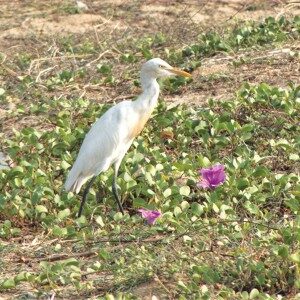
Cattle Egret in the scrub.
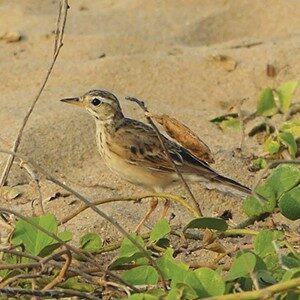
Paddyfield Pipit.
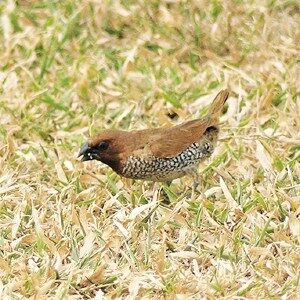
Scaly-breasted Munia gleaning grass seed.
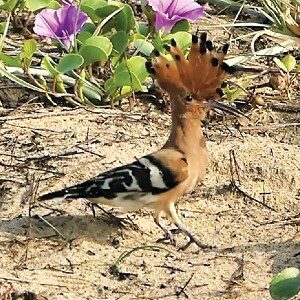
Hoopoe and Goat’s-foot Glory.
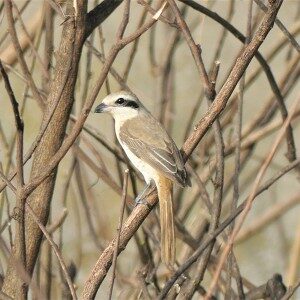
Brown Shrike on dry Calotropis stem.
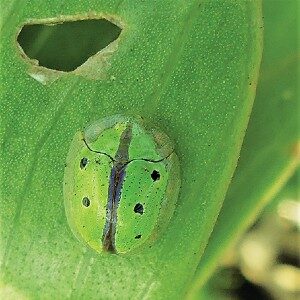
Green Tortoise-beetle.
The stretch of land that I walk by is marked by a variety of scrub vegetation that is present along our Coromandel coast. One can see different species of thorny grasses and herbs, including two spreading plants known as Goat’s-foot Glory and Beach Bean which sport beautiful pink flowers. Presently, this kind of vegetation may be seen south of the Adyar Broken Bridge and in pockets further down by the side of the fisherfolk settlements. It must have been part of the locality’s native vegetation – today, greater population numbers have forced it to dwindle.
This scrub is noticeable especially due to the large pink cup-shaped flowers of the Goat’s-foot Glory, the leaves of which resemble a goat’s foot. Their flower in numbers is a pleasing sight, more so when a hoopoe is searching for insects in this green and pink mat. The Beach Bean plants, which also grow in equal profusion, bear pink-coloured flowers and its pods are broad and bean-like, quite unmistakeable.
Sometimes, we also get islands of the Giant Milkweed (Erukkampoo), whose fresh leaves and flowers sprout only at the base. Possibly due to the salty air and constant breeze, the stems are shorn of leaves beyond a height of about two feet. Nevertheless, the stems are favoured lookout points for the Plain Prinia and the migratory Brown Shrike. The green mat below shelters many prey species for the birds like roaches, spiders, robberflies, butterflies and moths, crickets, beetles, and the like. The seed-bearing grasses attract birds like the Scaly-breasted Munia. Some cattle roam around with Cattle Egrets and Drongos in attendance and the cow patties have egg-laying flies which again attract the Paddyfield Pipit. Plants from the lands further up from the seashore like Neem, Pongam etc. try to grow in the sea sand but struggle and are left with stick-like growths of a couple of feet and no higher. These are again observation perches for the Green Bee-eater.
Frequented by all and sundry who should know better, this patch of beauty is reeling under the burden of garbage pollution – liquor and soft drink bottles, garbage deposited by the sea (after receipt of the same at the estuary mouths) and the offerings made by people mourning their dead. Irrespective of all the talk about Swacch Bharat (and the taxes collected for it), people from the fishing communities prefer the seashore as a public toilet while the educated city dwellers use it for their dogs to do their dirty business. What a sorry state of affairs! We are masters at spoiling our beautiful surroundings.
It is not as if the beach scrub is useless. This scrub vegetation has evolved to hold the soil in place and has established itself on tropical seashores. In fact, when a patch was cleared as a part of the beautification drive, the consequences were immediate – the sea breeze blew sand right into the promenade and onto the public. Fortunately, the vegetation was left to grow once again, and has remained untouched. But in other places bereft of this green mat, petty traders have been granted licences to sell their wares and have amusement stalls.
Gilding the lily is resorted to in the name of development and naturalists realize that this process is doing more harm than good to our environment. We realize too late that our natural wealth has been irreversibly damaged in the process. In the simple case here, we are set to lose all its beauty once the scrub gets cleared for human activities.

